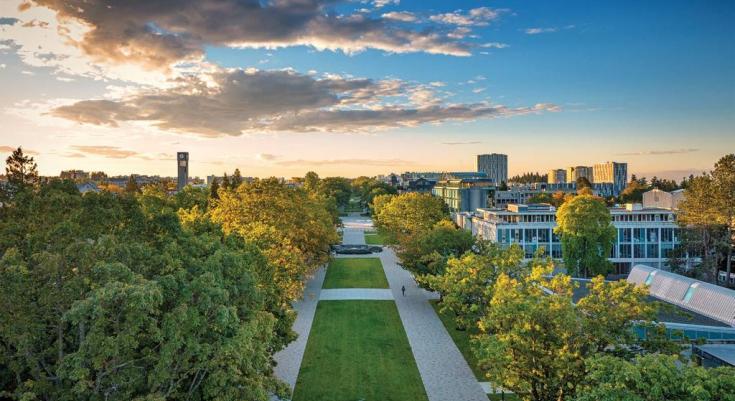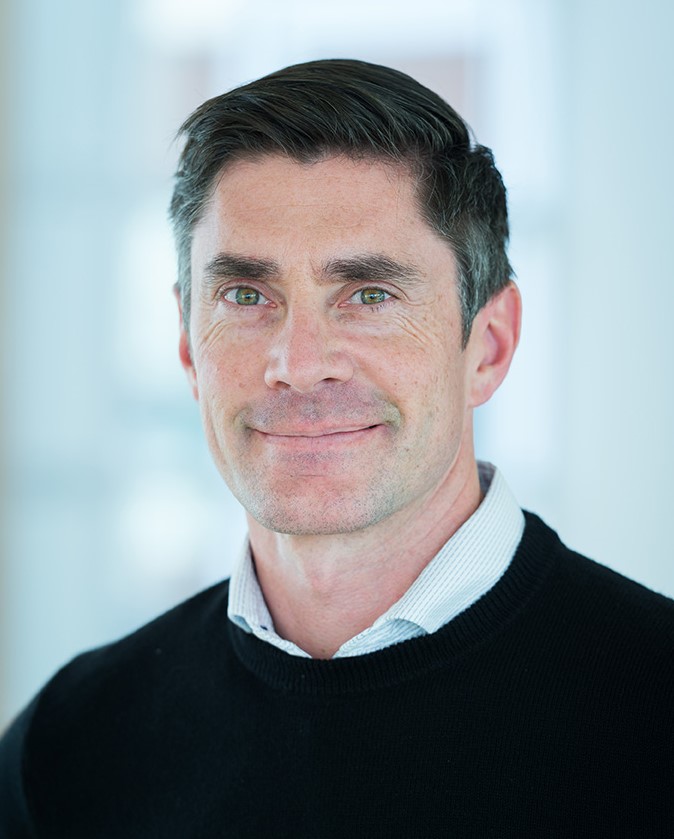
A Q&A with Michael White, Associate Vice-President, Campus + Community Planning.

Michael White joined the University of British Columbia at the beginning of 2014 as Associate Vice-President, Campus + Community Planning (C+CP).
His role has a broad set of responsibilities that include long-range planning, development regulations and management, campus and landscape design, municipal engineering, operational sustainability and community programs and engagement.
When not on campus, Michael can be found strolling through his Mountainview neighbourhood (mid Fraser-Main) with his family, experiencing first hand the regeneration of an older Vancouver neighbourhood.
Q: So, a new year has begun, what are your main priorities for C+CP in 2016?
MW: There are three priorities that the department is focused on this year: the continued planning and implementation of our sustainable and well-connected campus, implementation of our Engagement Charter, and leadership development both within the department and with our stakeholders.
Q: What is the Engagement Charter?
MW: We have worked hard to maintain and enhance the ways in which we engage with our community – students, faculty, staff, campus residents, and neighbours such as the Musqueam, City of Vancouver and Metro Vancouver. The Charter’s ten Engagement Principles provide a framework for constructive dialogue with our community that is clear, open and transparent.
Q: Can you give us an example of how the Charter’s Principles are used?
MW: We have been focusing on creating and sustaining a continuous conversation with neighbourhood residents through series of events called Community Conversations. These C+CP and University Neighbourhoods Association (UNA) co-hosted conversations provide opportunities for neighbourhood residents to tell us what is working and what isn’t, as well as areas where we might work more collaboratively.
We’ve also been focused on increasing engagement within our development processes. We have enhanced notification and outreach, broadened opportunities for engagement related to specific projects, and began consulting with stakeholders in the appointment of student, faculty, and resident representatives to our Development Permit Board.
We are increasing faculty engagement in our planning processes and policy development work as well. An example being the Library Garden design process that is underway. Faculty have been represented on working committees and at workshops that have taken place throughout the design process. This includes faculty from the UBC First Nations Longhouse, the Physics and Chemistry Departments, UBC Library, and the Faculty of Arts, each lending an important perspective to the process.
We are increasing student engagement through monthly meetings with student leadership to complement our expanded efforts of engaging more rigorously on individual plans and projects. This approach served the University very well over the past year through the process to create and implement the plans/guidelines for University Boulevard.
Q: Does C+CP engage with any research aspects of the University?
MW: The redevelopment of the D.H. Copp Building is a campus-as-a-living-lab project that brings together researchers, faculty tenants, UBC Properties Trust, operational departments and potentially industry. This is a very exciting project that will be one of the first research projects in Canada at the scale of a medium density mixed-use building.
Our SEEDS Sustainability Program continues to grow with more projects and agreements in place with different faculties and departments. This provides increased engagement between researchers on campus, our students, and the operational work of the University. We have partnered with a number of professors who are integrating SEEDS projects into their courses. For example, students in Psychology 321, Chemical and Biological Engineering 573, and Geography 371 have been conducting a number of research projects focused on campus waste sorting. These projects are now informing how C+CP staff engage the wider campus community around reducing waste.
Q: How does C+CP engage with off-campus communities?
MW: We recently signed a memorandum of understanding (MOU) with Metro Vancouver (and are exploring a refresh of our current MOU with the City of Vancouver). We’re rolling up our sleeves to work on a number of initiatives together spanning research and learning, operational issues, and regional strategic issues, such as exploring the sustainable movement of goods and people.
We continue to build our relationship with the Musqueam First Nation, both at a strategic level, such as plans for different areas of campus or future rapid transit, and at a project level, such as the new House Post to be placed near the Alumni Centre and engagement on the future Indian Residential Schools History and Dialogue Centre.
Q: Can you tell us a little more about planning and the focus on building a sustainable campus?
MW: I’m interested in our role in creating a place where folks can work, study, and live that addresses a range of sustainability aspirations from reductions in GHGs to complete and well-connected communities and improved happiness and wellbeing. We are at the leading edge of this kind of planning and look forward to pushing ideas forward as part of the University’s overall academic mission.
The update to the Climate Action Plan is incredibly exciting. We’re close to reaching our 2015 goal of reducing greenhouse gas emissions by 33 per cent. Now we’re looking at our next goal: aspiring to a 67 per cent reduction of GHG emissions by 2020. This is an area where UBC has demonstrated its leadership and commitment to climate action and one where we will continue being a leader.
A third key priority for the department this year is furthering social sustainability on campus. This ranges from an engaged campus to more regenerative buildings and neighbourhoods through to building leadership capacity both within our department and in our communities.
Q: C+CP also supports UBC’s Okanagan campus. What can we expect at UBCO in 2016?
MW: The UBC Board of Governors recently adopted the UBCO Campus Plan, allowing for a doubling of academic and student housing floorspace. Implementation of the plan is underway and includes a redesign of public spaces and more sustainable transportation options on and to/from campus. We are taking a whole systems approach to infrastructure planning, looking at the various dimensions of infrastructure on campus through a more integrated approach to water, waste, and energy.
Q: What would you says is the most interesting spot on campus?
MW: The most interesting spot for me is University Boulevard. Over the next five years the area will transformed into a mixed use hub of academic activities, shops, services, transit, housing, recreational facilities and outdoor spaces. I am excited that we can actually implement a complete sustainable community concept on campus that has the potential to become the poster child for campus planning of the future.